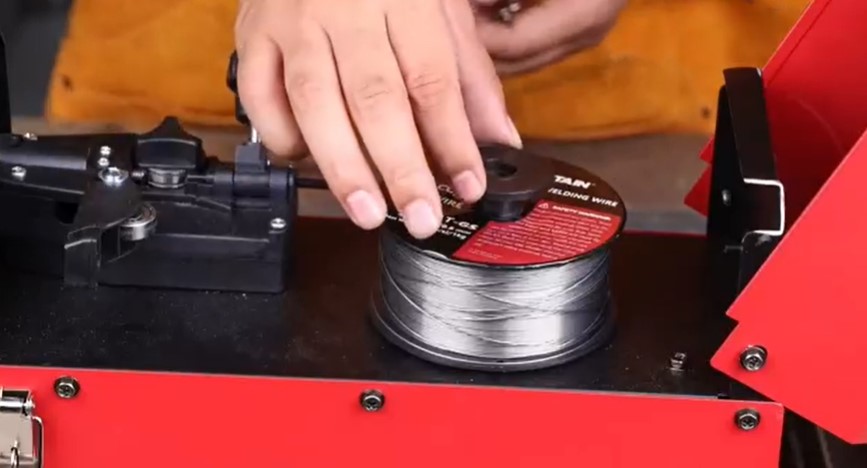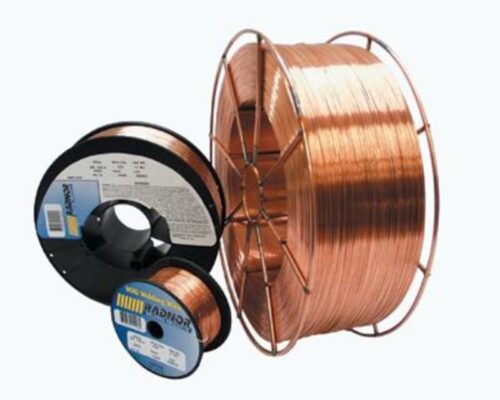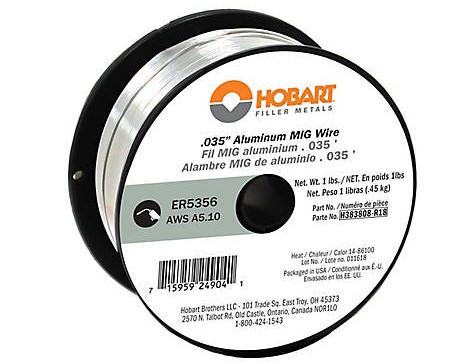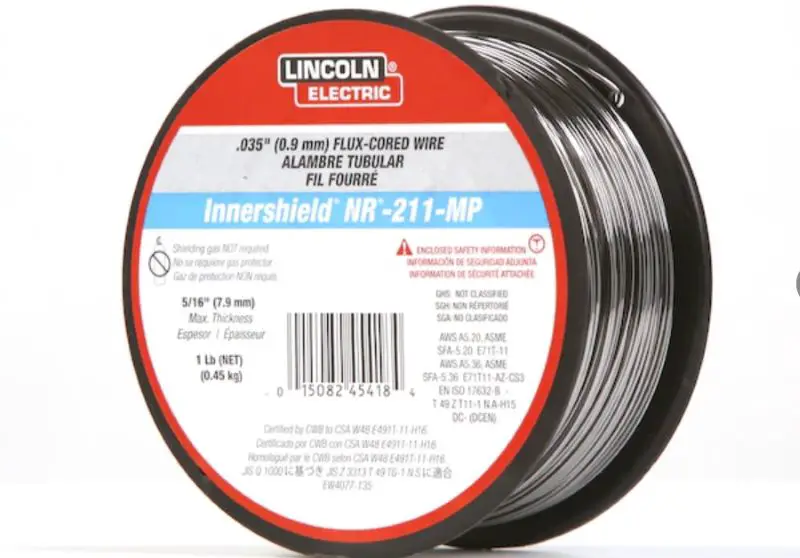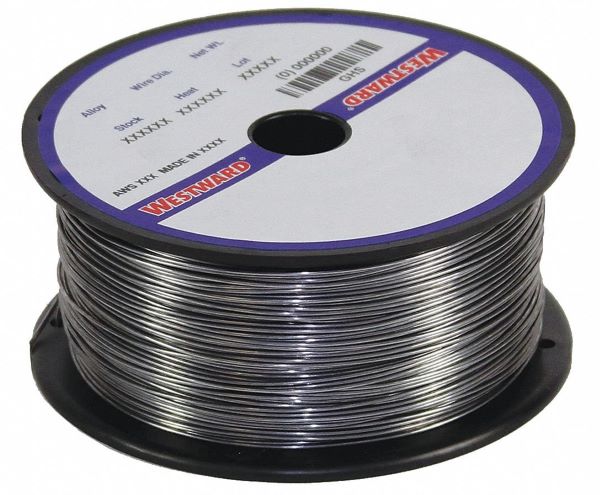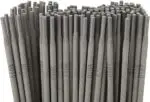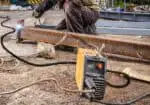Welding requires a lot of power and is a high-energy process. Therefore, it is essential to use the right size wire for your welder to ensure that it functions effectively.
One of the key components of the welding process is the welding wire, which is used to fill the gap between the two pieces of metal and create a strong, solid bond.
In this article, we will discuss welding wire, its properties, and its importance in the welding process.
What is a welding wire?
Welding wire is a type of filler metal that is used in welding to bridge the gap between the two pieces of metal being joined.
It is typically made of a metal alloy that is compatible with the metals being joined, such as steel, aluminum, or copper.
The wire is fed into the welding gun or torch and melted to create a puddle that flows into the gap between the two pieces of metal, fusing them as it cools.
Welding wire is available in a variety of different sizes and types, each with its unique properties and characteristics.
The most common types of welding wire include solid wire, flux-cored wire, and metal-cored wire. Solid wire is the most basic type of welding wire and is used for welding thin materials.
Flux-cored wire has a flux core that helps to protect the weld from contamination, making it ideal for welding in dirty or windy conditions. Metal-cored wire has a metal core that provides higher deposition rates and better penetration than solid wire.
The properties of welding wire are important to consider when choosing the right wire for a particular welding job. The most important properties of welding wire include its tensile strength, elongation, and ductility.
Tensile strength is the amount of force that the wire can withstand before breaking, while elongation is the amount of deformation the wire can endure before breaking. Ductility is the ability of the wire to bend without breaking.
The importance of welding wire in the welding process cannot be overstated. Without the proper wire, it is impossible to create a strong, solid weld that will hold up under stress and pressure.
Welding wire plays a critical role in the welding process, providing the necessary material to fill the gap between the two pieces of metal being joined and creating a strong, reliable bond.
What are the different types of welding wire?
Welding wire is an essential component of welding equipment that is used to join two pieces of metal or other materials. Welding wire is available in various types that have different properties and characteristics.
The type of welding wire to be used depends on the application and the material being welded. In this essay, we will discuss the different types of welding wire.
1. Carbon Steel Welding Wire
Carbon steel welding wire is the most commonly used welding wire. It is used to weld carbon steel and low-alloy steel. Carbon steel welding wire has a low melting point, and it is easy to use.
It is ideal for welding thicker materials that require more heat. Carbon steel welding wire is available in various diameters, making it suitable for a wide range of applications.
2. Stainless Steel Welding Wire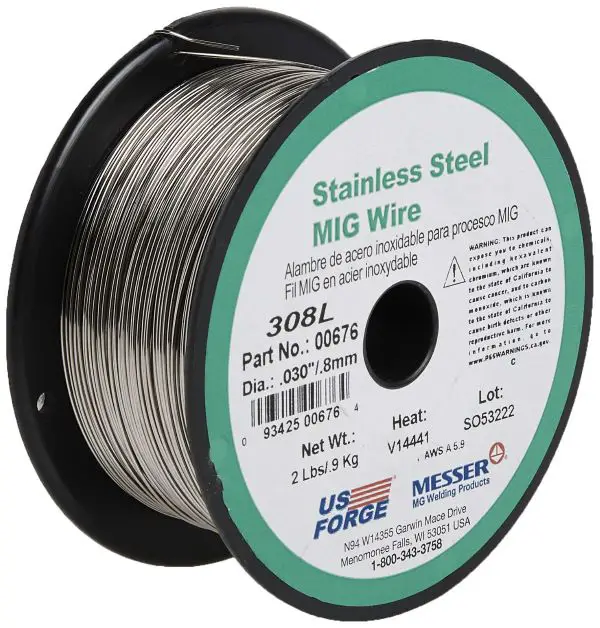
Stainless steel welding wire is used to join stainless steel and other high-temperature alloys. It has a high melting point, and it is more challenging to use than carbon steel welding wire.
Stainless steel welding wire is available in various grades that have different properties, such as resistance to corrosion, heat, and oxidation.
The grade of stainless steel welding wire depends on the application and the material being welded.
3. Aluminum Welding Wire
Aluminum welding wire is used to join aluminum and aluminum alloys. It has a low melting point, and it is easy to use.
Aluminum welding wire is available in various grades that have different properties, such as strength, corrosion resistance, and weldability. The grade of aluminum welding wire depends on the application and the material being welded.
4. Flux-Cored Welding Wire
Flux-cored welding wire is a type of welding wire that has a hollow core filled with a flux compound. The flux compound produces a shielding gas that protects the weld from atmospheric contamination.
Flux-cored welding wire is used for welding thick materials that require high heat. It is ideal for outdoor welding applications, where wind and other environmental factors can affect the welding process.
See also: 4 Best Welders for Flux Core Welding
5. Nickel Welding Wire
Nickel welding wire is used to join nickel and nickel alloys. It has a high melting point, and it is more challenging to use than carbon steel welding wire.
Nickel welding wire is available in various grades that have different properties, such as resistance to corrosion, heat, and oxidation.
The grade of nickel welding wire to be used depends on the application and the material being welded.
The type of welding wire to be used depends on the application and the material being welded. The most common types of welding wire are carbon steel welding wire, stainless steel welding wire, aluminum welding wire, flux-cored welding wire, and nickel welding wire.
By understanding the characteristics and properties of each type of welding wire, welders can select the most suitable welding wire for their specific welding needs.
What are the different sizes of welding wires?
Welding wire comes in various sizes, and the choice of wire size is crucial to the success of the welding process. Here we will explore the different sizes of welding wire and their applications.
The size of the welding wire is determined by its diameter, measured in inches or millimeters. The most common sizes of welding wire are 0.023, 0.030, 0.035, and 0.045 inches in diameter.
The larger the diameter of the welding wire, the more amperage it can handle, and the more heat it can produce.
Conversely, smaller diameter wires require less heat and amperage to weld. The size of the welding wire also affects the penetration and deposition rate.
The 0.023-inch welding wire is the thinnest and is suitable for welding thin materials, such as sheet metal. It requires less heat and amperage to weld and produces less spatter.
However, it has a lower deposition rate, and the weld joint may be weaker than those produced by larger wires.
The 0.030-inch welding wire is the most common size and is suitable for welding materials of medium thickness. It produces a good deposition rate, and the weld joint is strong and durable.
It requires slightly more heat and amperage than the 0.023-inch wire, and there may be more spatter.
The 0.035-inch welding wire is thicker and suitable for welding thicker materials. It requires more heat and amperage than the 0.030-inch wire, and the weld joint is stronger and more durable. However, it produces more spatter, and the deposition rate is lower.
The 0.045-inch welding wire is the thickest and suitable for welding the thickest materials. It requires the most heat and amperage and produces the most spatter. However, the weld joint is the strongest and most durable, and the deposition rate is the highest.
In addition to the standard sizes, welding wire also comes in other sizes, such as 0.052 and 0.062 inches. These sizes are suitable for heavy-duty welding and require even more heat and amperage than the 0.045-inch wire.
They are commonly used in the construction industry for welding steel beams and other large structures.
Factors to consider when choosing the wire size for a welder
1. Type of welder: The type of welder you have will determine the size of wire you need. There are two types of welders: MIG and TIG.
MIG welders use a continuous wire feed, while TIG welders use a tungsten electrode to create an arc.
The size of the wire for a MIG welder is measured in inches, while the size of the tungsten electrode for a TIG welder is measured in millimeters.
2. Amperage: The amperage of your welder will also determine the size of the wire you need. The higher the amperage of your welder, the thicker the wire you will need.
A general rule of thumb is to use a wire that is one size larger than the amperage of your welder. For example, if your welder is rated at 100 amps, you should use a wire that is rated at 125 amps.
3. Material: The material you are welding will also determine the wire size you need. Thicker materials will require thicker wires. For example, if you are welding thick steel, you will need a thicker wire than if you are welding the thin sheet metal.
4. Joint configuration: The joint configuration will also play a role in determining the size of the wire you need. A butt joint, where the two pieces of metal are flush, will require less heat and a smaller wire than a lap joint, where one piece of metal overlaps the other.
Choosing the right size wire for a MIG welder:
For a MIG welder, the wire size is measured in inches. The most common sizes are 0.023, 0.030, and 0.035 inches. The size of the wire you need will depend on the factors listed above.
For thin sheet metal, a 0.023-inch wire is recommended. For thicker materials, such as steel plates, a 0.035-inch wire is recommended.
If you are unsure of the size of wire you need, consult the owner’s manual for your welder or contact the manufacturer.
Choosing the right size tungsten electrode for a TIG welder:
For a TIG welder, the size of the tungsten electrode is measured in millimeters. The most common sizes are 1.6mm, 2.4mm, and 3.2mm. The size of the tungsten electrode you need will depend on the factors listed above.
For thin sheet metal, a 1.6mm tungsten electrode is recommended. For thicker materials, such as steel plates, a 2.4mm or 3.2mm tungsten electrode is recommended.
If you are unsure of the size of the tungsten electrode you need, consult the owner’s manual for your welder or contact the manufacturer.
Wrapping UP
In conclusion, choosing the right size wire for your welder is important for achieving a successful weld. The size of wire you need will depend on the type of welder, amperage, material, and joint configuration.
It is important to consult the owner’s manual for your welder or contact the manufacturer if you are unsure of the size of wire you need.
By choosing the right size wire, you can ensure that your welder functions effectively and produces high-quality welds.

